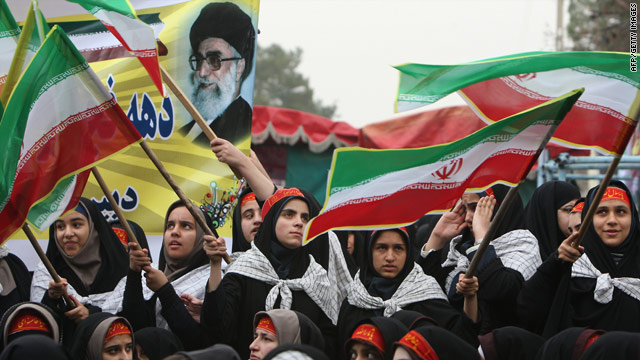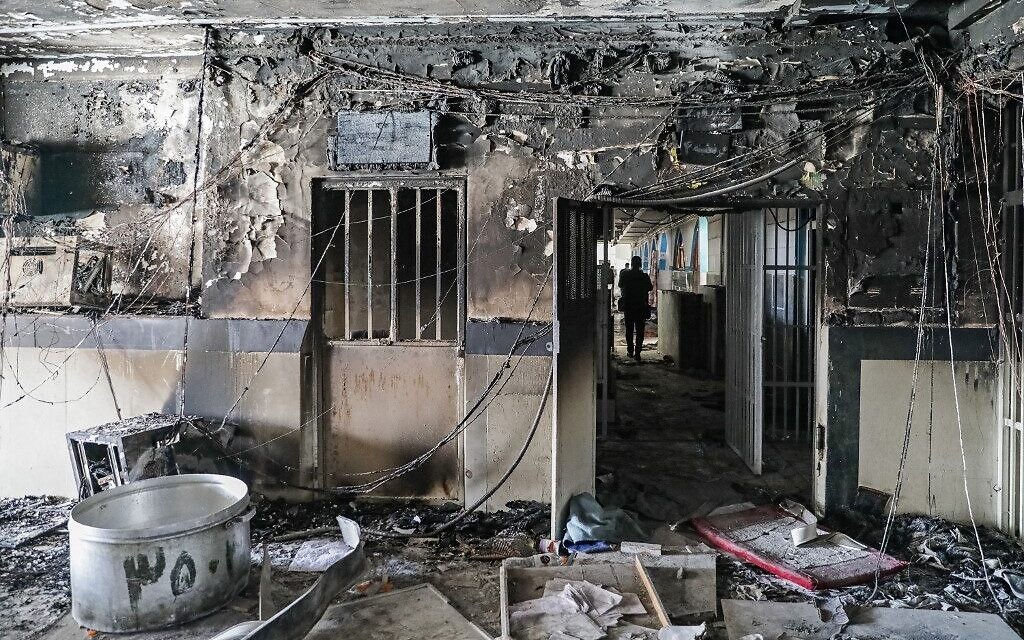Iran: Former Revolutionary Talks About Parting Ways With Theocracy
Iranian ceremonies marking the 28th anniversary of the country's Islamic Revolution culminate on February 11. For some, recalling the fall of the shah and the birth of the Islamic republic in 1979 is an occasion to celebrate and show support for the country's Islamic establishment. For others, like Mohsen Sazegara, a former acolyte turned establishment critic, the anniversary is a reminder of dashed dreams and hopes.
Sazegara used to be a true revolutionary. A student in the United States and a member of the anti-Shah student movement, he left school to join Iran's main religious leader, Ayatollah Ruhollah Khomeini, in his Parisian exile. He worked in the ayatollah's press office and helped organize interviews. "I returned to Iran with Mr. Khomeini on that flight, and in the period between February 1 and 11, I became active in Sepah's school [among Khomeini's main headquarters] in the international-relations and press section," says Sazegara, as he recalls his experience as a 22-year-old on the historic plane trip that brought Khomeini back to Iran in February 1979, after 14 years in exile.
Days of Great Hope
They were days of great hope for people, like Sazegara, who strongly opposed the U.S.-backed monarchy for its political repression and its Western influence over their country. Upon his return to Tehran, Khomeini took control of the Iranian revolution. Ten days later, the revolution was concluded. After a referendum, the Islamic Republic of Iran was officially created on April 1, 1979. An Islamic constitution was adopted that gave ultimate authority to unelected religious leaders. Islamic laws were applied, and Islamic hijab -- covering all but hands and face -- became obligatory attire for women.

Early Disenchantment
Critics say the revolution failed to deliver on its promises of freedom and justice. In the early years after the revolution, Sazegara helped form Iran's paramilitary Islamic Revolution Guards Corps (IRGC). He was also involved in shaping official radio broadcasts and held several government posts, including deputy minister for heavy industry. Sazegara, and others, became disillusioned by unmet expectations. He began questioning the clerical establishment and one of its key bodies: the powerful Guardians Council, which has the power to vet laws approved by the parliament.
...And Prison Shock
His brief detention marked a turning point for Sazegara. He says he protested against prisoners' treatment at the hands of Evin's prison warden in a meeting with the founder of the Islamic republic. "I said, 'Mr. Khomeini, if you agree with what Mr. Lajevardi is doing at Evin, you should tell us. If you are against it, then why don't you stop it?'" Sazegara says. "The result of this incident was that I decided to revisit the ideas of the founders of the revolution, because we had never imagined we would replace the shah's dictatorship -- which we opposed mainly because of torture and killings -- by an establishment that would do the same things, or maybe even worse."

Condemning 'Violent Revolution'
He now supports democratic paths to change in Iran, including through a nationwide referendum. "We have no other choice than to hold a [referendum] under the supervision of international organizations, so that we will be able to ask the people whether they want the Islamic establishment or not," he says. "Of course, talking about it is easy; but bringing it into practice is difficult." Sazegara's revolutionary fervor evaporated long ago. Some of his fellow revolutionaries remain loyal, of course. One of the most prominent among them is President Mahmud Ahmadinejad, who has vowed to return the country to its early revolutionary values.

Reviving the Iran Nuclear Deal
Reviving the Iran nuclear deal remains off the agenda for the Biden administration, a U.S. State Department spokesperson said on August 26, as Tehran called for “new negotiations” to update the agreement before it can be revived. Iran’s new foreign minister, Abbas Araqchi, said last week that the agreement “cannot be revived in its current form” due to sunset clauses that have expired and insisted that new talks are needed to resuscitate the agreement.

However, a State Department spokesperson told RFE/RL that the Joint Comprehensive Plan of Action (JCPOA), as the 2015 nuclear accord is formally known, “is not on the table right now.” The United States unilaterally exited the deal in 2018 under then-U.S. President Donald Trump. "The United States will ensure one way or another that Iran will never have a nuclear weapon, and we are prepared to use all elements of national power to ensure that outcome," the spokesperson said.




















